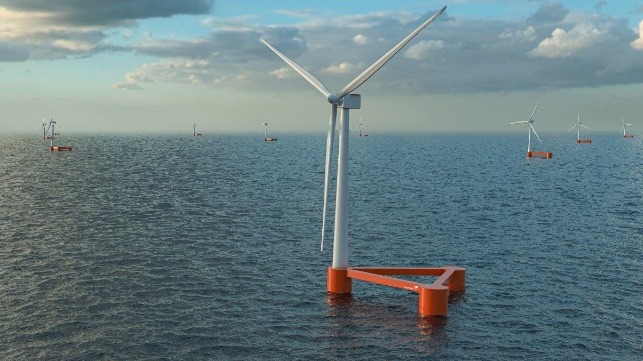Rising Costs Prompt Equinor to Pull Plug on Floating Wind Project

Norwegian state oil company Equinor has pulled the plug on a floating wind-to-platform power project on the Norwegian continental shelf, citing rising costs.
In June 2022, Equinor joined with Petoro, TotalEnergies, Shell and ConocoPhillips to pursue the design of a floating wind farm in the area around the Troll oil field, about 30 nm off the coast of Bergen. The development concept called for a 1 GW floating wind farm linked to a shoreside substation. The power would help feed the nearby Troll and Oseberg offshore oil platforms, which are already linked to the grid near the same location Using that connection, the platform operators would buy as much of Trollvind's power as possible, giving it a built-in "market" for its power at a commercially viable price point.
At the time, Equinor CEO Anders Opedal said that Trollvind would help cut emissions through electrification, deliver more green power to a region that was experiencing shortages, and help Norway cement its leadership in floating offshore wind. However, even the best of plans can be put on hold by inflation and supply chain challenges. According to Equinor, rising costs in the offshore wind industry have undercut the goal to complete Trollvind without support, and "it is no longer a commercially sustainable project." Additionally, the project team had to make technical changes because of the preferred technology for the wind farm "not being available."
"Trollvind was a bold industrial plan to solve pressing issues concerning electrification of oil and gas installations, bringing much needed power to the Bergen-area, while accelerating floating offshore wind power in Norway. Unfortunately, we no longer see a way forward to deliver on our original concept of having an operational wind farm well before 2030,” says Siri Espedal Kindem, vice president of renewables Norway.
As Kindem suggested, the project's challenges were also stacked up against a tight deadline. In 2020, Norway set an emissions-intensity reduction target for its oil and gas operators, asking for a 40-50 percent cut by 2030. Achieving that cut will require platform electrification and new sources of green power. While Trollvind was designed to help meet this requirement, it has not achieved enough maturity as a project to reach implementation by the deadline, further reducing its attractiveness.
Equinor said that it would continue to look for future opportunities in the floating wind sector, which it pioneered through the development of the Hywind Scotland and Hywind Tampen projects.
The cancellation marks a new setback for Equinor's floating-wind ambitions. The firm lost out of the bidding in the massive ScotWind lease round in November 2021; it proposed a large-scale, one-gigawatt floating development, similar in size to Trollvind, but the offer was not accepted. "We are going to compete fiercely going forward," EVP for renewables Pal Eitrheim told Energy Voice after the auction.
